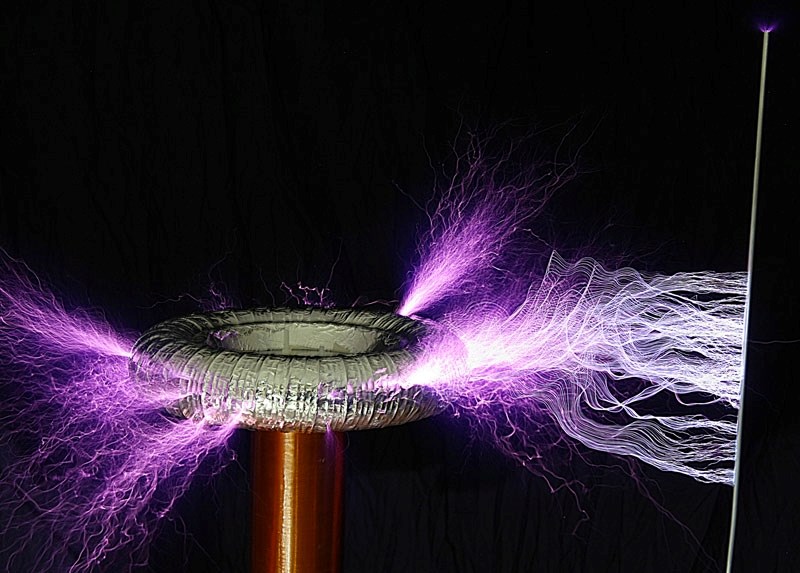Tesla coils are awesome. That's a scientific fact.
About 35 Sir George Simpson students learned that last Friday in St. Albert when teacher Tony Rafaat fired one up. Rafaat built the miniature lightning generator to get his students more interested in science.
Rafaat describes the device to the class, which looks like a doughnut on a tube. Nikola Tesla invented the coil in around 1893 to show how to transmit electricity wirelessly, he says. He succeeded, and created a device that could shoot 46-metre- long lightning bolts. "It blows my mind to think what this guy could have done with our technology today."
He has the class move to the opposite side of the room before throwing the switch. This coil will shoot lightning bolts out to about 47 centimetres, he says. Each bolt packs about a 470,000-volt punch. "This, once again, is not a toy, but it is really cool."
A Tesla what?
Rafaat says he built the coil with the help of Michael Judd, a retired artist in South Carolina and an expert on high-voltage devices. The two met when Rafaat tried to buy a capacitor off Judd to build a microburst flash.
Judd says he's always been a tinkerer, but didn't get interested in Tesla coils until he read a book on their inventor, Nikola Tesla. Tesla was an American scientist, and inventor and was a pioneer in electrical research.
The coil works like an electromagnetic swing set, Judd says. First, regular household current is used to power a transformer that charges a capacitor using a spark gap. The spark gap is a high-speed switch that turns on and off hundreds of times a second by having electricity leap across an air-filled gap.
Once full, the capacitor releases its energy all at once into a coil at the base of the device. That coil induces a second current in another coil that runs up the post, acting as a transformer to boost the voltage even higher.
Each pulse from the first coil acts as a shove, boosting the energy in the doughnut to higher and higher levels. Eventually, enough energy builds up in the doughnut that it shoots it out as arcs of purple plasma.
Switch on!
Rafaat puts on insulated gloves and throws the switch. "Quarter power!" he says. White lightning crackles across the spark gap at the base of the device, illuminating the darkened room and filling it with the buzz of angry metal bees. "Half power!" The bees get louder. "Full power!"
The doughnut becomes a writhing electric octopus, its neon-purple tentacles wriggling in the air. Rafaat carefully teases out some longer arcs with an insulated rod and demonstrates how a fluorescent light tube illuminates when held close to the coil. "Did you see how it lit the tube? There's clearly a wireless transmission of power."
The bolts coming off this coil won't kill you if handled carefully, Rafaat says, but they do sting. "If one hits you, it's very uncomfortable."
The device itself is grounded and inspected by an electrician for safety. Rafaat keeps the students about six metres away. A slight smell of smoke and ozone lingers when he shuts it off.
Science sparker
Tesla had hoped to use his coils to power everything wirelessly, says Judd, but ran into a fundamental problem: the coils are high voltage, but low amperage, meaning they deliver energy in big squirts instead of the steady stream most devices need to work. He could illuminate lights with them, but not run cars.
Researchers have invented inductive chargers that work on Tesla's principles, Judd says, transmitting power over very small distances. Tesla coils are mainly used for entertainment nowadays — you can play music on them if they're tuned right. "In all practical terms," Rafaat says, "a Tesla coil serves no real purpose."
It can transmit power wirelessly, but it's not exactly safe or practical. It can, however, teach you about harmonics, currents and induction. "It's an exciting tool to use in school to demonstrate the power of electricity."
And nothing gets people more interested in science than lightning bolts, Judd says. "All of a sudden someone who was never interested in science is saying, 'Wow! How does that work?'"




